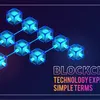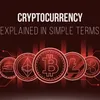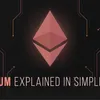What are NFTs and why these virtual tokens are being sold for millions of dollars
NFTs are virtual assets — they have no tangible form but can be sold like any other piece of property. In recent times, they have captured mainstream media attention and some have even been sold for millions of dollars. Here’s all you need to know about them.
NFTs, or Non-Fungible Tokens, have taken the media by storm in recent months.
The sale of an NFT by digital artist Beeple (Mike Winkelmann) for $69 million earlier this year opened the floodgates for scores of other NFT sales by various artists, musicians, actors, and regular users.
Western stars such as Eminem, Grimes, Paris Hilton, Lindsay Lohan, as well as Indian celebrities Amitabh Bachchan, Vishal Malhotra, and more have all jumped in on the act.
In fact, some of these digital assets — in the form of images, videos, etc, — are being traded for hundreds, thousands, and even millions of dollars. NFTs are also finding applications across segments such as gaming, digital identity apps, licensing and certification, digital art, etc.
So what exactly are NFTs and why are some of them considered so valuable? How do they work and how are they created, sold, and bought?
Here’s all you need to know.
Fundamentals of NFTs explained
NFTs are essentially virtual assets that have no tangible form but can be sold like any other piece of property.
They are a form of unique cryptographic tokens on a blockchain like Ethereum or Binance Smart Chain. In some sense, they can be considered crypto collectables.
It might help to understand the basics of blockchain, crypto, and Ethereum before diving deeper into NFTs.
NFTs are unique tokens that are non-fungible, which means they are not interchangeable with each other.
Fungibility refers to an asset’s interchangeability. Fiat currencies, such as dollars or rupees, are tangible as a hundred-rupee note is interchangeable with another hundred-rupee note.
Fungibility is an essential characteristic of fiat currencies since they serve as a medium of exchange. Even cryptocurrencies are considered fungible as one Bitcoin owned by individual A is always equal in value to one Bitcoin owned by person B.
But NFTs are unique and do not serve as a medium of exchange. Rather, they are collectibles, and serve as proof of ownership of a certain digital asset. Thus, they are non-fungible, i.e. they are not exchangeable with one another.

Everydays: the First 5000 Days - a digital work of art by Beeple (Mike Winkelmann) which sold as an NFT for $69.3 million. Image Source: Al Jazeera
NFTs and proof of ownership
New entrants to this space often wonder how ownership of NFTs works, and how it can be proven.
The answer lies in where proof of ownership is recorded. As mentioned above, blockchains like Ethereum or Binance Smart Chain are used to document proof of ownership of NFTs.
This is possible because blockchains are distributed and decentralised public ledgers maintained by a network of thousands of computers (users or nodes) around the world. As such, blockchains are secure, public, and in most cases, tamper-proof.
Proof of ownership is thus traceable on blockchain, thereby allowing a particular NFT, for example, to be owned by a single individual.
It follows from this single-ownership feature that there can only be one original version of the digital asset. Images, videos, or audio can be copied and replicated numerous times on the Internet, but the ownership of the original version is visible on the blockchain.
More recently, it has also become possible to own a fraction of an NFT, allowing micro-investors to participate in and own part of an expensive digital asset, such as a digital painting worth $1 million.
Why are NFTs valuable?
The characteristics of NFTs allow users to program digital scarcity into these virtual assets — a factor crucial to giving NFTs their value.
Just like most valuable items (gold, currency, crypto), value isn’t inherent to NFTs. In financial systems, value is a shared belief or consensus.
In other words, something has value if people believe it does and are willing to buy/sell or trade that item.
In many cases, NFTs are not backed by tangible, real-world assets. Just like all fiat currency isn’t backed by gold, an NFT of a digital painting is not necessarily backed by a tangible, physical version of the same painting.
NFTs can exist purely in the virtual world. For example, a powerful and ultra-rare virtual sword (of which only one version exists) from an adventure game integrated with blockchain can be considered an NFT if its ownership is recorded on the public ledger.
If multiple players in the game consider it valuable enough, they could bid for ownership and acquire it for a high price from the owner. At this point, the blockchain on which the digital sword is issued records a new transaction proving the transfer of ownership.
The new owner can then use the sword in-game or potentially resell or flip it for an even higher price. And like the sword, the game can feature numerous other virtual items that are tradeable, thereby creating a micro-economy or market of buyers and sellers.

Nyan Cat - the popular YouTube meme - sold as an NFT for $590,000. Image Source: The Verge
Link to real-world assets
Gaming economies are not new but using blockchain to tokenise gaming assets (like the rare sword) is taking it one step further and allowing players to become their legitimate owners.
This works not only in virtual games but also in other physical markets. In fact, NFTs are sometimes backed by real-world assets, or rather, are virtual representations of those particular physical assets.
For instance, Italian luxury fashion designer Dolce & Gabbana is rolling out NFTs representing a collection of real-world suits, dresses, and accessories.
These items of clothing have digital versions that can be used by digital avatars in virtual worlds — environments that are sometimes collectively referred to as the ‘metaverse’.
The metaverse loosely refers to a virtual space where these users (through their digital avatars) can be present and interact with other users. But the metaverse, in its truest sense, is an interconnected, shared, 3D space where anyone can participate.
The metaverse will be explained in detail in future articles.
How NFTs can be created, sold and bought
As mentioned earlier, in any virtual space, NFTs have value as these digital assets are scarce. But this scarcity is not artificial. In fact, it is programmed into the smart contracts that govern their sales.
There are several frameworks for creating NFTs. Among the most prominent is ERC-721, which is an NFT standard on Ethereum. ERC-721 stands for Ethereum Request for Comments 721. ERC-155 is a more improved standard.
These standards on Ethereum allow NFTs to be transferred with relative ease between different applications built on the Ethereum blockchain.
Similarly, Binance Smart Chain has its own NFT standards, such as BEP-721 and BEP-155.

Clipart of a rock (the brown rock in the middle) sold as an NFT for $1.3 million
For regular users, NFTs can be bought and sold in open marketplaces such as OpenSea (on Ethereum), Treasureland and Juggerworld (on Binance Smart Chain). These markets connect buyers and sellers and allow for changes in the price of NFTs based on market supply and demand.
To create NFTs, one needs to own some crypto to pay the minting (creating) fees and an asset to turn into an NFT. If the individual is using the Ethereum blockchain, they need to have ETH handy in their crypto wallets (such as MetaMask) and connect the wallet to a marketplace like OpenSea, which also allows users to create NFTs.
OpenSea is currently free to use and does not charge users to create an NFT, but it charges a seller fee of 2.5 percent.
YourStory’s flagship startup-tech and leadership conference will return virtually for its 13th edition on October 25-30, 2021. Sign up for updates on TechSparks or to express your interest in partnerships and speaker opportunities here.
For more on TechSparks 2021, click here.
Edited by Saheli Sen Gupta










